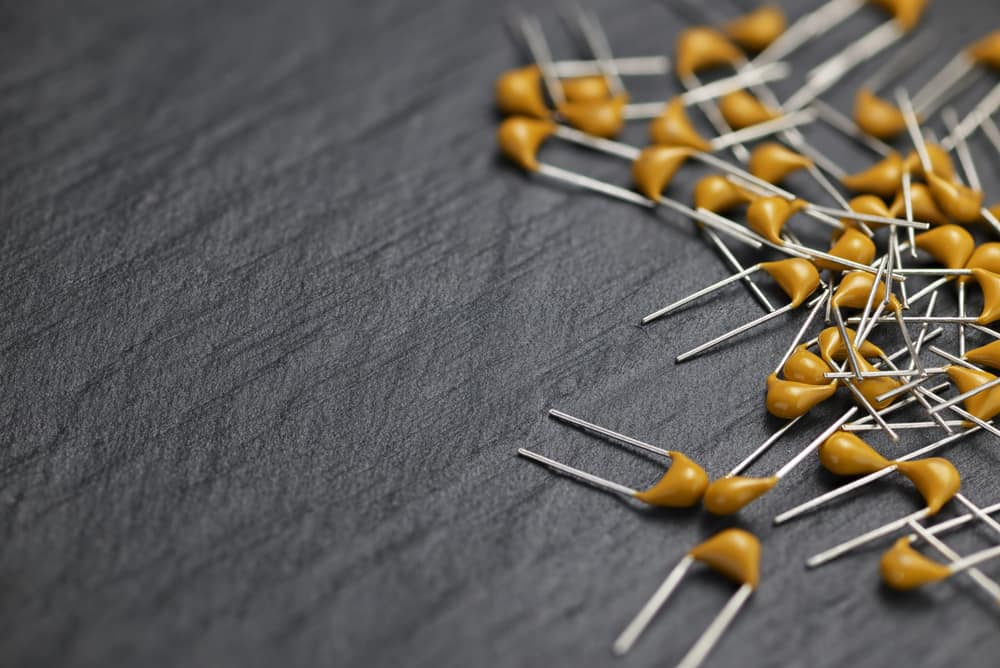
- +86 18120750932
- colin@xmsinuowei.com
- th.xmsinuowei.com

Key Takeaways
Irrespective of the capacitor type, ceramic capacitors are derated to prevent immense loading and other ill-effects caused by applied voltage and temperature.
Derating can be done by limiting the applied voltage to around 50% below the rated voltage. This type of derating is called voltage derating.
The derating method that limits the temperature to 15℃ below the maximum rated operating temperature is called temperature derating.

The ceramic capacitor derating voltage should be at least 50% of the expected voltage to ensure risk-free operation
Ceramic capacitors are often used in electronic circuits due to characteristics such as precision, tolerance, size, high voltage, and high power handling capabilities. The selection process for ceramic capacitors in any circuit application should take into account the expected voltage appearing across the ceramic capacitor, as capacitor degradation caused by applied voltage approaching the rated voltage value is detrimental to the component as well as the circuit. The derating technique, where the capacitor is utilized for its decreased rated capability, helps protect ceramic capacitors from such risks. Ceramic capacitor derating voltage should be at least 50% of the expected voltage to ensure risk-free operation. In this article, we will look at ceramic capacitor derating and its voltage requirements.
Types of Ceramic Capacitors
Ceramic capacitors are famous for their compact physical size, large capacitance, and high insulation resistance. They are manufactured by firing a thin film of metal at high temperatures on both sides of the stacked ceramic dielectric layers. The metal film is usually made of silver. The terminal leads are soldered onto the metal film or attached by pressure contact. The entire package is encapsulated for environmental protection and electrical insulation. This type of ceramic capacitor is called a ceramic disc capacitor.
Another type of ceramic capacitor, called a multilayer ceramic capacitor (MLCC), is small in size and often used in surface mount technologies, EMI or RFI suppression systems, or as feed-through capacitors. Irrespective of the capacitor type, ceramic capacitors are derated to prevent immense loading and other ill-effects caused by applied voltage and temperature.
Ceramic Capacitor Derating
Reliability, protection against excessive surge current, and the stability of the main electrical parameters are physical reasons that lead to the derating of any type of capacitor. The reliability of ceramic capacitors in high moisture conditions is high, as the ceramic offers impermeability to moisture. However, ceramic capacitors exhibit poor reliability with temperature. Ceramic capacitors are also vulnerable to failures in the form of short circuits, open circuits, or parameter drift. Excessive surge current is capable of inducing thermal degradation as well as fatal failures. With voltage and temperature, electrical parameters such as capacitance, equivalent series resistance (ESR), and equivalent series inductance (ESL) vary.
Ceramic Capacitor Derating Methods
Derating means reducing the amount of load accelerating factors so that capacitor operation becomes less susceptible to failures. Voltage and temperature are the load accelerating factors in capacitors. The cumulative effects of voltage and temperature are critical to capacitor loading. The capacitance value is influenced by rising voltage and temperature. As applied voltage approaches the rated voltage, degradation in the capacitor value is observed. When the temperature rises, a decrease in capacitance is experienced in circuits.
In ceramic capacitors, derating can be achieved by controlling the derating parameters, namely voltage and temperature. Derating is found to be the most effective way to prevent failure as well as parameter drift in ceramic capacitors. It can be done by limiting the applied voltage to around 50% below the rated voltage. This type of derating is called voltage derating. The other derating method is to limit the temperature to 15℃ below the maximum rated operating temperature; this method is called temperature derating.
Ceramic Capacitor Derating Voltage
Ceramic capacitors are vulnerable to capacitance degradation with applied voltage. The X7R, X5R, and Y5V ceramic capacitors experience a decrease in capacitance over time due to the relaxation or realignment of electrical dipoles within the capacitor. The ceramic capacitance decrease reaches up to 80% at rated voltage. This phenomenon is known as the voltage coefficient of capacitance.
It is recommended to use a ceramic capacitor at a lower voltage than the rated voltage in order to eliminate the effect of the voltage coefficient of capacitance. Voltage derating is expressed as the percentage of the voltage that is subtracted from the rated voltage. For example, a 30% ceramic capacitor derating voltage means the ceramic capacitor should be operating at 70% of the rated voltage.
การเลือกตัวเก็บประจุแบบเซรามิกที่มีพิกัดแรงดันไฟฟ้ามากกว่าหรือเท่ากับสองเท่าของแรงดันไฟฟ้าที่จะใช้กับตัวเก็บประจุในแอปพลิเคชันหนึ่งๆ เป็นแนวทางปฏิบัติที่ดีที่สุดในการลดค่า เนื่องจากพลังงานที่เก็บไว้ในตัวเก็บประจุขึ้นอยู่กับแรงดันไฟฟ้ากำลังสอง การลดแรงดันไฟฟ้าของตัวเก็บประจุเซรามิกจึงส่งผลกระทบต่อความสามารถในการจัดการพลังงานของตัวเก็บประจุเซรามิก
เพื่อป้องกันการระเบิดและค่าสัมประสิทธิ์แรงดันไฟฟ้าของความจุ วิธีที่ดีที่สุดคือเลือกตัวเก็บประจุเซรามิกที่มีการลดแรงดันไฟฟ้าที่ประมาณ 50% ของแรงดันไฟฟ้าที่กำหนด
ที่มา:จังหวะ

บริการออนไลน์